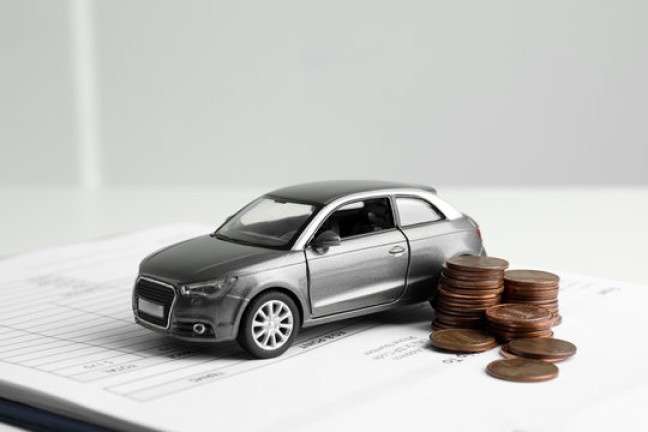If you’re considering financing a car, one crucial piece of legislation you should understand is 15 U.S.C. 1635. This law is part of the Truth in Lending Act (TILA), and it outlines your rights as a consumer when it comes to car financing, specifically focusing on the right to cancel a loan under certain conditions. Understanding this law can help protect you in case you decide the deal you’ve made isn’t the right fit. In this article, I will walk you through the ins and outs of 15 U.S.C. 1635, explain how it applies to car loans, and discuss how you can use this knowledge to your advantage.
Table of Contents
What is 15 U.S.C. 1635?
15 U.S.C. 1635, often referred to as the “Right of Rescission,” is a part of the Truth in Lending Act (TILA), which aims to ensure transparency in lending. Under 15 U.S.C. 1635, consumers have the right to cancel certain types of credit transactions, including car loans, within three business days of signing the agreement. This is crucial because it gives consumers an opportunity to reconsider their decision and back out if they feel the loan terms are not in their best interest.
The law applies primarily to loans secured by a personal vehicle, such as auto loans for new or used cars. However, it does not apply to all car loan scenarios, and there are important conditions to be aware of. In this article, I will help you understand when and how you can use this right, along with some examples to clarify the process.
When Does the Right of Rescission Apply?
The right to cancel a car loan under 15 U.S.C. 1635 typically applies to transactions where:
- The loan is a refinance of an existing car loan – If you’re refinancing your current car loan with a new loan from a different lender, you may be entitled to the three-day rescission period.
- The loan involves a secured credit transaction – This means the car itself is used as collateral for the loan. If you fail to repay the loan, the lender has the right to repossess the vehicle.
There are exceptions, so it’s important to clarify whether your car loan falls under this category. For example, if the loan is for a purchase that does not involve refinancing or using the car as collateral, such as a lease or a personal loan for the car, the right of rescission typically does not apply.
How Does the Right of Rescission Work?
Once you sign the car loan agreement, you have three business days to change your mind, as long as you follow specific guidelines. Here’s how it works:
- Notice: You must receive proper notice from the lender regarding your right to cancel the loan. This notice usually comes in the form of a separate document that clearly states the time period in which you can cancel the loan. If the lender fails to provide this notice, the rescission period might be extended beyond three days.
- Timing: The right of rescission is only valid for three business days, beginning the day after the loan agreement is signed. Weekends and holidays are not counted in the three-day period, so if you sign the loan agreement on a Friday, you would have until the following Wednesday to cancel.
- Returning the Vehicle: If you choose to exercise your right to rescind the loan, you must return the car in the same condition it was when you signed the loan agreement. You must also pay back any money you may have received, including down payments or other fees.
- Canceling the Loan: To cancel the loan, you must notify the lender in writing within the three-day period. This notification should clearly state that you are exercising your right to rescind the loan under 15 U.S.C. 1635.
How Does the Cancellation Process Work?
When you cancel the loan, the lender is required to return any money you’ve paid. This includes the down payment, any other payments made, and fees paid upfront. However, the lender will typically subtract the amount for the use of the car during the period you had it.
Here’s a step-by-step breakdown of the process:
- Notify the Lender: Send a letter or email to the lender, stating your intention to cancel the loan. Make sure to do this within the three-day period.
- Return the Car: You’ll need to return the car in the same condition it was when you took ownership.
- Get Your Money Back: The lender should refund any money you’ve paid, but they may charge you for the days you used the car. This is where calculations come into play.
Example of a Cancellation Calculation
Let’s say you financed a car with a $15,000 loan, and you paid $3,000 as a down payment. You decided to cancel the loan on the second day after signing the agreement.
- Loan Amount: $15,000
- Down Payment: $3,000
- Use Period: 2 days
- Daily Use Charge: For simplicity, let’s say the lender charges a daily use fee of $30.
In this case, your calculation for the use of the car would look like this:
- Daily Use Fee: $30
- Total Use Fee: 2 days x $30 = $60
Now, subtract the use fee from the down payment:
- Refund Amount: $3,000 – $60 = $2,940
So, you would receive $2,940 back from the lender.
Why Does This Law Matter to Consumers?
The right of rescission under 15 U.S.C. 1635 can be a powerful tool for consumers who realize they’ve made a mistake in signing a car loan agreement. Without this law, many consumers would be stuck with unfavorable loan terms or a vehicle they no longer want or need. By allowing a cooling-off period, this provision helps protect consumers from making hasty decisions and gives them time to reassess their situation.
Additionally, this law can provide a safety net for those who may have been misled or coerced into signing a loan agreement. If a lender fails to follow the required steps for providing notice or does not disclose key information, the consumer could be entitled to cancel the loan.
What Happens If You Don’t Rescind the Loan?
If you don’t exercise your right to rescind the loan within the three-day period, the loan becomes final, and you will be obligated to repay it under the agreed-upon terms. You will not be able to cancel the loan unless there’s another provision in the contract that allows for cancellation.
It’s also worth noting that the rescission right doesn’t mean you get a “free pass” on paying for the car. The amount refunded will be adjusted for the days you used the vehicle. While this gives you a second chance, it doesn’t absolve you of responsibility for your financial decisions.
Can You Still Cancel After the Three-Day Period?
Once the three-day rescission period expires, your ability to cancel the loan becomes very limited. If you decide after that time that the loan is no longer right for you, you may need to negotiate directly with the lender or explore options like refinancing or selling the vehicle.
However, if there are issues with the loan itself, such as misleading information or failure by the lender to comply with the law, you may still have legal recourse. In such cases, it’s advisable to consult with an attorney to explore your options.
Common Mistakes to Avoid
When considering whether to exercise your right of rescission, it’s important to avoid these common mistakes:
- Missing the Deadline: You must act quickly. Keep track of the days after signing the loan agreement to ensure you don’t miss the rescission window.
- Failing to Return the Car in Good Condition: If the car is damaged or if you’ve used it excessively, the lender may charge you for the depreciation or the cost of repairs.
- Not Keeping Documentation: Always keep copies of any documents related to the loan, including your written notice to cancel and any correspondence with the lender.
Conclusion
15 U.S.C. 1635 offers consumers an important safeguard in the car financing process. It gives you the right to cancel certain loans within three days, providing a much-needed cooling-off period if you realize that the car loan terms are not right for you. By understanding how this law works, when it applies, and what steps you need to take, you can protect yourself and make more informed decisions when financing a car.





